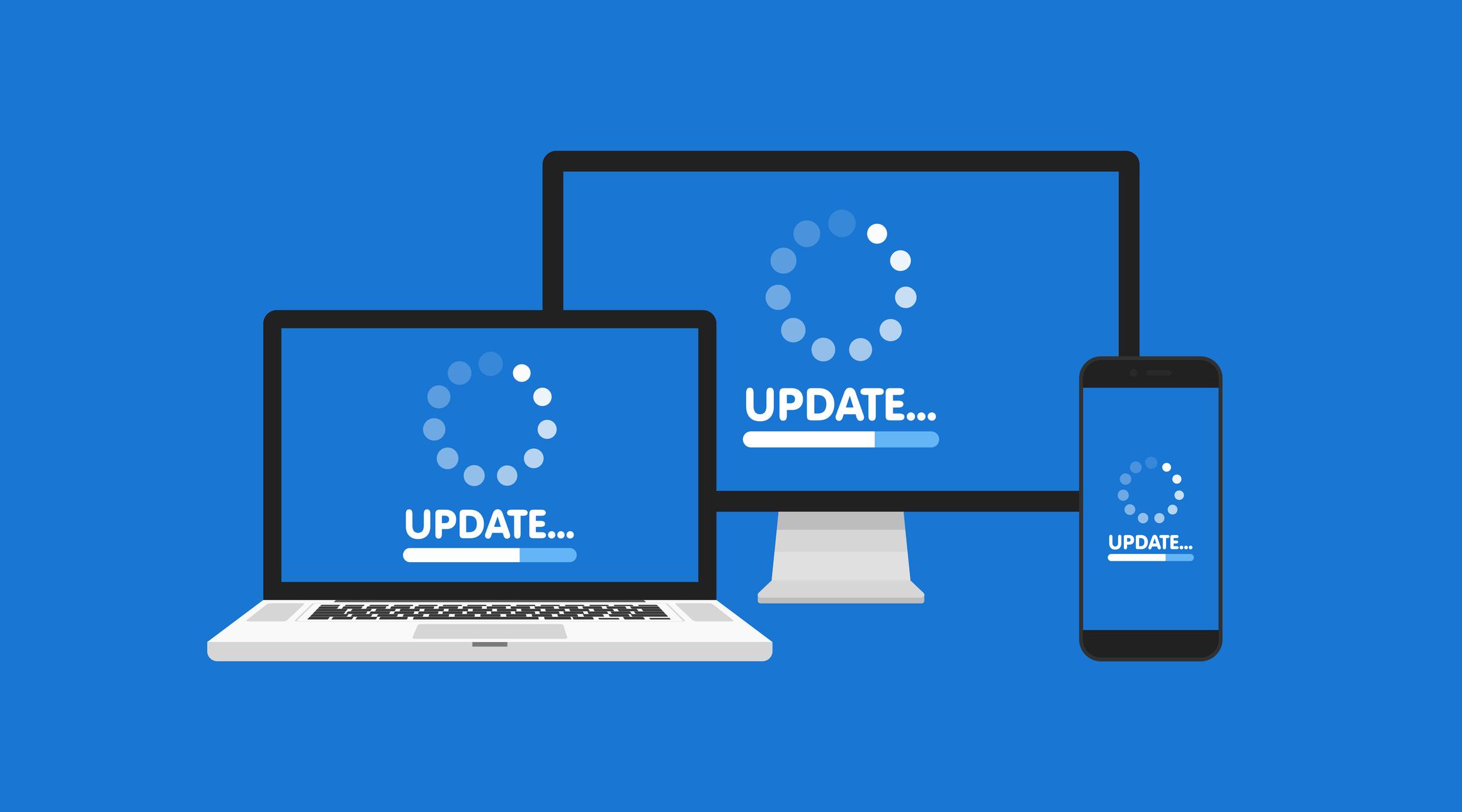
In today’s digital age, email marketing remains a powerhouse tool for businesses of all sizes. Whether you’re a small startup looking to connect with your first customers or a seasoned enterprise aiming to nurture your audience, the right email marketing platform can make all the difference. With so many options available, how do you choose the best one? Don’t worry; we’ve got you covered! In this article, we’ll walk you through the 13 best email marketing platforms of [current_year], comparing their features, pricing, and user experiences. By the end, you’ll be equipped with all the insights you need to find the perfect fit for your marketing strategy. Let’s dive in and discover which platform will help you elevate your email game and drive impressive results!
Understanding the Importance of Email Marketing in Todays Digital World
Email marketing remains one of the most effective tools in a digital marketer’s toolkit, particularly as businesses strive to foster deeper connections with their audience. In a landscape inundated with social media and ever-evolving technology, the significance of direct communication through email cannot be overstated. Here’s why email marketing is crucial in today’s digital ecosystem:
- Direct Connection: Email provides a direct line to your audience, allowing for personalized and targeted messaging that social media cannot replicate.
- Cost-Effective: Compared to traditional advertising methods and even digital ads, email marketing is incredibly affordable, making it accessible for businesses of all sizes.
- High ROI: Studies show that for every dollar spent, email marketing can yield an impressive return on investment, often cited at around $42 for every $1 spent.
- Measurable Results: With various analytics tools available, businesses can track open rates, click-through rates, and conversion rates, providing valuable insights into customer behavior.
- Automation Capabilities: Modern email marketing platforms allow for automation, enabling businesses to run campaigns effortlessly, such as welcome emails, birthday discounts, or re-engagement strategies.
Moreover, the ability to segment email lists enhances the relevance of communications. By categorizing subscribers based on their preferences, behaviors, or demographics, businesses can tailor messages that resonate with specific audiences. This not only improves engagement but also builds trust and loyalty over time.
In addition to segmentation, mobile optimization is a key focus for email marketing. With a significant portion of emails opened on mobile devices, ensuring that messages are responsive and visually appealing on all screen sizes can greatly enhance user experience and engagement rates.
Furthermore, integrating email marketing with other digital strategies can amplify its effectiveness. For instance, linking email campaigns with social media efforts can create a cohesive message that reinforces brand presence across multiple channels, driving higher traffic and conversions.
Lastly, as privacy regulations become more stringent, understanding compliance with laws like GDPR and CAN-SPAM is vital. Ensuring that your email marketing practices adhere to these regulations not only protects your business from potential legal issues but also builds trust with your audience.
| Email Marketing Platform | Key Feature | Best For |
|---|---|---|
| Mailchimp | Easy-to-use interface with robust analytics | Small businesses |
| Constant Contact | Excellent customer support | Event marketing |
| AWeber | Strong automation features | Content creators |
| GetResponse | Advanced segmentation and personalization | E-commerce |
as you navigate the world of digital marketing, understanding the pivotal role of email can significantly enhance your outreach efforts. By leveraging the right email marketing platform, you can connect more meaningfully with your audience, ensuring that your messages don’t just land in inboxes, but also resonate with readers.
Key Features to Look for in an Email Marketing Platform
When exploring email marketing platforms, it’s crucial to focus on features that align with your business goals and marketing strategy. Here are some essential features to consider:
- User-Friendly Interface: A clean and intuitive dashboard makes it easy to navigate the platform, manage campaigns, and analyze performance without a steep learning curve.
- Template Variety: Look for a platform that offers a range of customizable email templates. This allows you to maintain brand consistency while crafting visually appealing campaigns.
- Automation Capabilities: Smart automation tools enable you to set up welcome series, re-engagement campaigns, and triggered emails based on user behavior, saving you time and increasing engagement.
- Segmentation and Targeting: The ability to segment your audience based on demographics, purchase history, or engagement levels allows for personalized messaging that can significantly enhance open and click rates.
- A/B Testing: A robust A/B testing feature helps you optimize your campaigns by allowing you to test various subject lines, content, and sending times to see what resonates best with your audience.
- Analytics and Reporting: Insightful analytics tools provide you with data on open rates, click-through rates, and conversions, helping you measure the success of your campaigns and adjust strategies accordingly.
- Integration Options: Ensure the platform integrates seamlessly with your existing tools, such as CRM systems, e-commerce platforms, and social media channels, to streamline your marketing efforts.
- Deliverability Rates: High deliverability rates are essential to ensure your emails land in the inbox and not the spam folder. Research the platform’s reputation and track record.
- Customer Support: Reliable customer support, whether through live chat, phone, or email, can be a lifesaver when you encounter issues or need guidance on best practices.
| Feature | Importance |
|---|---|
| User-Friendly Interface | Ensures ease of use |
| Template Variety | Enhances branding |
| Automation Capabilities | Saves time, boosts engagement |
| Segmentation and Targeting | Personalizes messaging |
| A/B Testing | Optimizes campaigns |
| Analytics and Reporting | Measures success |
| Integration Options | Streamlines marketing efforts |
| Deliverability Rates | Ensures inbox placement |
| Customer Support | Provides assistance when needed |
By prioritizing these features, you can choose an email marketing platform that not only meets your current needs but also scales with your business as it grows. Remember, the right platform can significantly enhance your marketing effectiveness and drive better results!
A Deep Dive into the Top Email Marketing Platforms of the Year
Email marketing remains one of the most effective strategies for businesses looking to engage customers and drive sales. As we dive into the leading platforms available this year, it’s essential to consider various factors such as ease of use, features offered, pricing, and customer support. Here’s an insight into the standout email marketing platforms that are dominating the landscape.
1. Mailchimp
Often recognized as a pioneer in the email marketing field, Mailchimp offers an intuitive interface and a plethora of features that cater to both beginners and seasoned marketers. Its drag-and-drop email builder makes it easy to create visually appealing campaigns.
- Automation: Advanced automation tools that help send targeted emails based on customer behavior.
- Analytics: Robust reporting features that provide insights into open rates, click-through rates, and customer engagement.
2. Constant Contact
Another popular choice among small businesses, Constant Contact prides itself on user-friendly tools that simplify the email marketing process. Its extensive library of templates caters to various industries, ensuring that every campaign resonates with its audience.
- List Segmentation: Efficiently segment your audience for personalized messaging.
- Event Management: Integrated tools for managing events and registrations directly through email.
3. Sendinblue
Sendinblue distinguishes itself with its unique SMS marketing feature, in addition to traditional email marketing. This platform is ideal for businesses seeking a comprehensive approach to customer communication.
- Email Campaigns: Create stunning, responsive emails with ease.
- CRM Features: A built-in CRM system to help manage customer relationships effectively.
4. ActiveCampaign
If you’re looking for powerful automation capabilities, ActiveCampaign is the way to go. This platform combines email marketing with robust CRM features, giving businesses the tools they need to create personalized customer experiences.
- Advanced Segmentation: Target specific audiences with tailored campaigns.
- Integrations: Seamlessly connects with various apps and services to enhance functionality.
5. HubSpot
HubSpot offers a comprehensive suite of marketing tools, with email marketing being one of its standout features. Designed for larger businesses, it provides extensive analytics and reporting capabilities.
- Lead Generation: Tools for capturing and nurturing leads.
- Personalization: Advanced targeting options for tailored content delivery.
Feature Comparison Table
| Platform | Best For | Starting Price | Free Trial |
|---|---|---|---|
| Mailchimp | Beginners & Small Businesses | $9.99/month | Yes |
| Constant Contact | Small Businesses | $20/month | Yes |
| Sendinblue | All-in-One Marketing | Free Starter Plan | Yes |
| ActiveCampaign | Advanced Marketers | $15/month | Yes |
| HubSpot | Enterprise Solutions | $50/month | Yes |
As you explore these platforms, consider your specific needs and goals. Whether you prioritize automation, ease of use, or comprehensive reporting, there’s a perfect solution waiting to streamline your email marketing efforts!
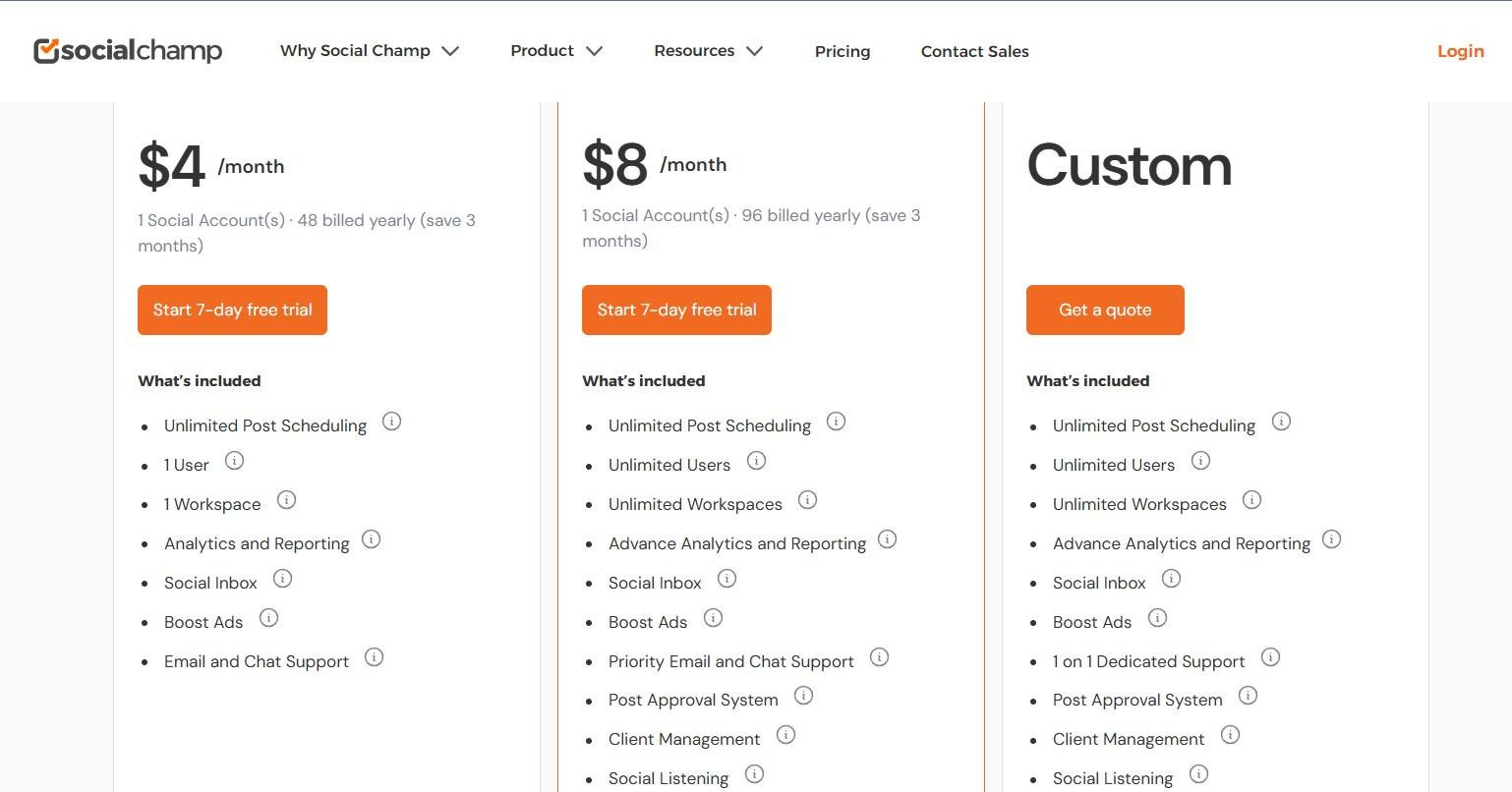
Comparing Pricing Plans for Budget-Friendly Choices
When it comes to selecting an email marketing platform, finding the right balance between features and cost is crucial for budget-conscious marketers. With a variety of options available, understanding the pricing plans can help you make an informed decision that doesn’t break the bank. Here’s a look at some of the most popular platforms and what they offer for budget-friendly marketing.
Key Factors to Consider
Before diving into specific pricing plans, consider these key factors that can influence your choice:
- Subscriber Limits: Different platforms have varying limits on the number of subscribers, which can impact your budget.
- Email Volume: Some services charge based on the number of emails sent, while others offer unlimited options.
- Feature Set: Advanced features like automation and analytics may come at a premium.
- Customer Support: Check if support is included or if it incurs additional costs.
Comparative Pricing Overview
To give you a clearer picture, here’s a simple comparison of a few popular email marketing platforms and their basic pricing plans:
| Platform | Starting Price | Subscriber Limit | Key Features |
|---|---|---|---|
| Mailchimp | Free for up to 500 contacts | 500 | Basic automation, templates |
| Sendinblue | $25/month | Unlimited | Email campaigns, SMS marketing |
| AWeber | $19/month | Up to 500 subscribers | Drag-and-drop editor, analytics |
| Constant Contact | $20/month | Up to 500 subscribers | Email automation, event marketing |
Feature-Rich Yet Affordable Options
While some platforms may appear cheaper, they might lack essential features. Here’s a glance at what you can expect from budget-friendly options:
- Mailchimp: Great for beginners with its free plan, but may require upgrades for more advanced features.
- Sendinblue: Offers a robust free tier, but if you send more than a certain number of emails daily, a paid plan becomes necessary.
- AWeber: Known for excellent customer support, making it a solid choice for those needing guidance.
- Constant Contact: While not the cheapest, it provides extensive features that justify the cost, especially for event-driven campaigns.
The Importance of Trial Periods
Many platforms provide trial periods or free tiers, allowing you to test the waters before committing. Taking advantage of these options can help you gauge usability, customer service, and whether the features align with your marketing goals.
selecting the right pricing plan depends on your specific needs, the size of your audience, and what features will best support your marketing strategy. With careful consideration and a bit of research, you can find a budget-friendly email marketing platform that allows you to effectively reach your customers without burning a hole in your wallet.
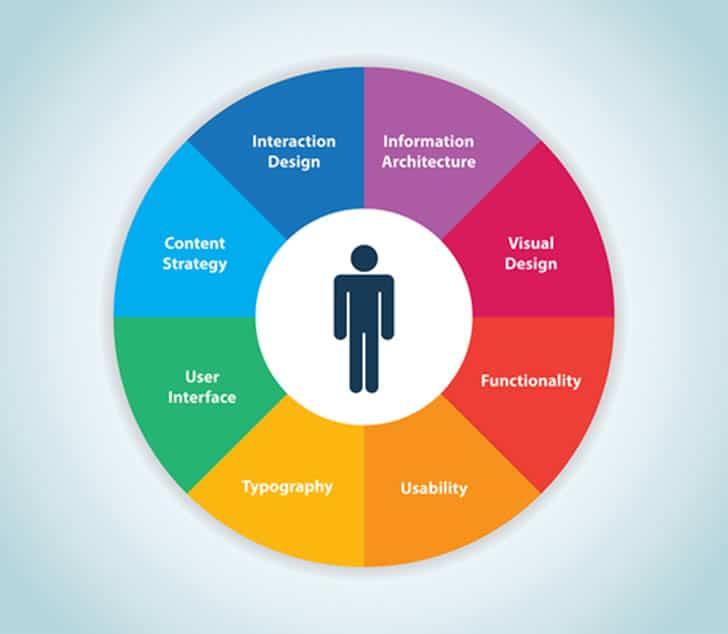
User Experience: Which Platforms Are Easiest to Navigate?
When it comes to selecting the right email marketing platform for your business, user experience is a key factor that can significantly impact your overall efficiency and success. Navigability can make or break your campaigns, especially if you’re new to email marketing. Hence, it’s essential to consider how intuitive and user-friendly each platform is before you dive in.
Here are some of the platforms known for their ease of navigation:
- Mailchimp – With its drag-and-drop editor and clear layout, Mailchimp is often praised for its user-friendly interface. Everything from list management to campaign analytics is easily accessible, making it a favorite among beginners.
- Constant Contact - This platform shines with its straightforward navigation. Users can quickly find tools for email design, list segmentation, and performance analysis without feeling overwhelmed.
- Sendinblue – Sendinblue offers a clean dashboard and streamlined processes that simplify email creation and automation. Its intuitive setup makes it easy for users to start building their campaigns right away.
- AWeber – AWeber is designed with simplicity in mind. The learning curve is gentle, and users appreciate the organized layout that guides them through the steps of email marketing.
To help you visualize how these platforms stack up against each other in terms of user experience, here’s a quick comparison:
| Platform | Ease of Use | Features |
|---|---|---|
| Mailchimp | ⭐⭐⭐⭐⭐ | Comprehensive tools and resources |
| Constant Contact | ⭐⭐⭐⭐ | Event marketing and surveys |
| Sendinblue | ⭐⭐⭐⭐½ | SMS marketing and automation |
| AWeber | ⭐⭐⭐⭐ | Reliable autoresponders |
Additionally, the platforms mentioned provide plenty of resources, such as tutorials and customer support, to help ease the learning curve. This aspect can be particularly beneficial if you encounter challenges during your journey.
Ultimately, the best choice for you will depend on your specific needs and preferences. If you value a platform that offers both ease of use and a wealth of features, take your time to explore the options and test out the ones that resonate with you the most. The right email marketing platform can empower you to create effective campaigns that engage your audience and drive results.
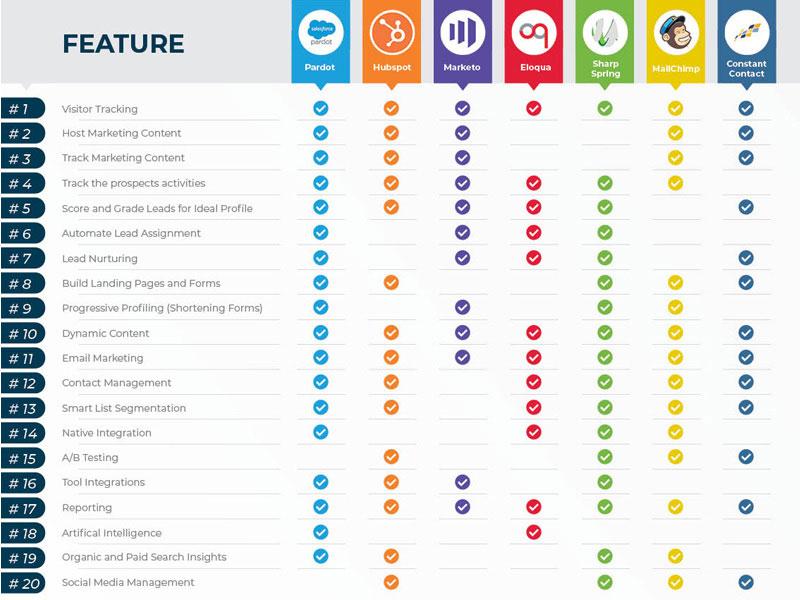
Exploring Automation Features for Streamlined Campaigns
Email marketing has come a long way, and with the right automation features, you can take your campaigns from good to great. Many platforms now offer a variety of tools designed to automate repetitive tasks, allowing you to focus on crafting compelling content and engaging with your audience.
Consider these powerful automation features that can streamline your email marketing efforts:
- Drip Campaigns: Set up a series of pre-scheduled emails that are sent based on user interactions. This allows you to nurture leads and keep your audience engaged without manual intervention.
- Behavioral Triggers: Automate emails based on specific user actions, like signing up for a newsletter or abandoning a shopping cart. Timely reminders can dramatically improve conversion rates.
- Segmentation: Use automated segmentation to tailor your messages to specific groups within your audience. This ensures that your content resonates with the right people at the right time.
- Follow-Up Emails: Automatically send follow-ups to recipients who haven’t opened your previous emails. This can significantly enhance engagement rates.
With the right platform, automation doesn’t just save time—it can enhance your overall marketing strategy. Here’s a quick comparison of notable platforms that provide robust automation features:
| Platform | Drip Campaigns | Behavioral Triggers | Segmentation |
|---|---|---|---|
| Mailchimp | ✔️ | ✔️ | ✔️ |
| ActiveCampaign | ✔️ | ✔️ | ✔️ |
| ConvertKit | ✔️ | ❌ | ✔️ |
| GetResponse | ✔️ | ✔️ | ✔️ |
Seamless automation features not only enhance the efficiency of your campaigns but also improve the overall experience for your subscribers. When they receive relevant content tailored to their interests and behaviors, they are more likely to engage with your brand.
Moreover, consider integrating your email marketing platform with other tools. Many of the top platforms offer integrations with CRM systems, social media, and eCommerce platforms, allowing for a more cohesive marketing ecosystem. This integration can help you gather valuable insights and further refine your automation strategies.
As you explore different options, look for platforms that prioritize ease of use, customization capabilities, and strong analytics. The right combination of automation features will empower you to execute your campaigns more effectively and achieve your marketing goals.

Analyzing Deliverability Rates: Which Platforms Ensure Your Emails Get Read?
Email deliverability is a crucial factor that can make or break your email marketing efforts. Understanding how different platforms perform in this area is key to ensuring that your carefully crafted messages actually land in your subscribers’ inboxes rather than getting lost in spam folders. In this section, we’ll take a closer look at the deliverability rates of various email marketing platforms and highlight which ones stand out for getting your emails read.
Several elements contribute to the deliverability rates of an email marketing platform. Here are some of the most significant factors:
- Sender Reputation: Platforms with a strong sender reputation typically have higher deliverability rates. A positive reputation is built over time through consistent compliance with best practices.
- Authentication Protocols: Utilizing authentication protocols like SPF, DKIM, and DMARC can enhance deliverability by verifying that your emails are genuinely from you.
- Engagement Metrics: Email providers often analyze engagement metrics such as open rates and click-through rates. Higher engagement can lead to improved deliverability.
- List Management: Effective list management, including regular cleaning of inactive subscribers, can help maintain a healthy sender score.
In the competitive landscape of email marketing platforms, some tools have established themselves as leaders in ensuring high deliverability. Here’s a quick overview of a few platforms that excel in this area:
| Platform | Deliverability Rate | Key Features |
|---|---|---|
| Mailchimp | 85%+ | Advanced analytics, A/B testing, Automation |
| Sendinblue | 90%+ | Email personalization, SMS integration, Segmentation |
| ActiveCampaign | 88%+ | CRM capabilities, Predictive sending, Dynamic content |
| AWeber | 87%+ | Subscriber segmentation, Easy to use templates, Autoresponders |
Platforms like Sendinblue and ActiveCampaign not only boast impressive deliverability rates but also offer advanced features tailored for targeted campaigns. For instance, Sendinblue’s email personalization options and segmentation capabilities allow you to create tailored messages that resonate with different audience segments, further enhancing engagement and deliverability.
Another aspect to consider is the customer support provided by these platforms. Having access to reliable support can help troubleshoot any issues that may arise with deliverability. For example, some platforms offer dedicated deliverability specialists who can provide guidance on best practices and troubleshooting advice to ensure that your emails reach their intended recipients.
Additionally, keeping an eye on your email metrics is vital. Many platforms provide robust analytics tools that allow you to track deliverability, open rates, and click-through rates. Utilizing this data allows you to make informed decisions and optimize your campaigns for better performance.
Ultimately, the choice of an email marketing platform should align with your business goals and the specific needs of your audience. By analyzing deliverability rates and leveraging the unique features of each platform, you can ensure that your emails not only get sent but also get read, maximizing your engagement and return on investment.
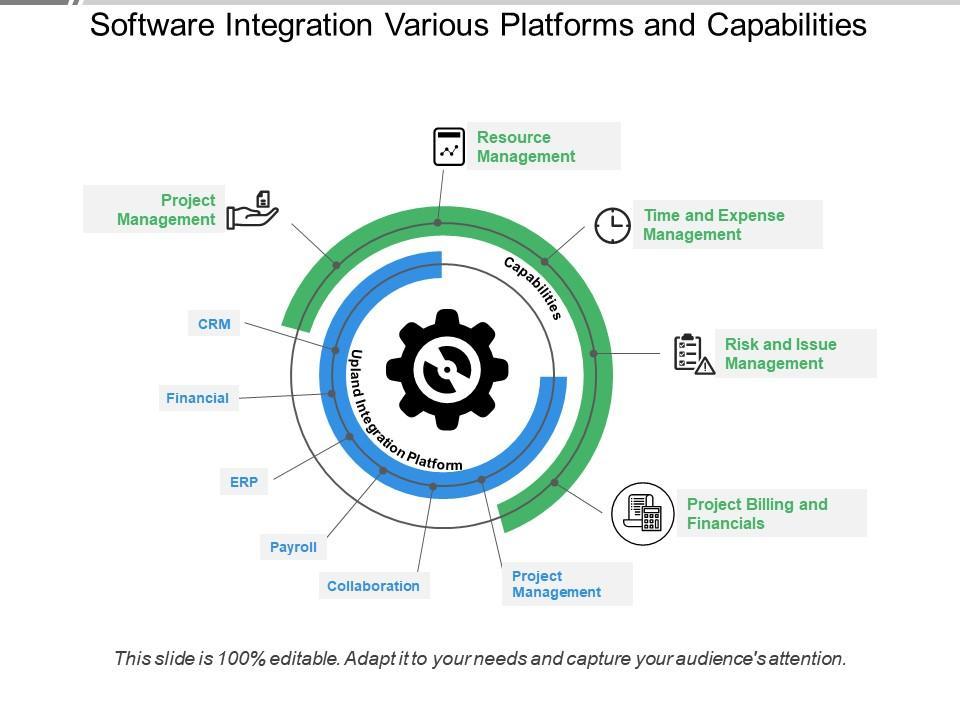
Integration Capabilities: How Well Do They Connect with Other Tools?
When choosing an email marketing platform, one of the most pivotal factors to consider is how well it integrates with the tools and systems you already use. Effective integration capabilities streamline your workflow, save you time, and enhance your marketing strategies. Here are several key aspects to look for when evaluating integration potential:
- CRM Compatibility: A top-tier email marketing platform should seamlessly connect with popular Customer Relationship Management (CRM) systems. This integration allows for better segmentation, personalization, and overall strategy alignment.
- eCommerce Platforms: If you run an online store, your email marketing tool should easily integrate with eCommerce platforms like Shopify or WooCommerce. This connection can help automate cart abandonment emails, product recommendations, and customer follow-ups.
- Social Media Integration: Connecting your email marketing with social media platforms can expand your reach. Look for platforms that allow you to easily share your campaigns or pull in user-generated content from these channels.
- Analytics Tools: The best email marketing platforms integrate with analytics tools such as Google Analytics. This integration will enable you to track engagement and conversions more accurately, helping you optimize your campaigns.
Let’s take a closer look at how some of the leading email marketing platforms stack up in terms of integration capabilities:
| Email Marketing Platform | CRM Integration | eCommerce Integration | Analytics Integration |
|---|---|---|---|
| Mailchimp | Yes (Salesforce, HubSpot) | Yes (Shopify, WooCommerce) | Yes (Google Analytics) |
| Constant Contact | Yes (Salesforce) | Yes (Shopify) | Yes (Google Analytics) |
| Sendinblue | Yes (Salesforce, HubSpot) | Yes (WooCommerce) | Yes (Google Analytics) |
| AWeber | Yes (Salesforce) | Yes (Shopify) | Limited |
As you can see, strong integration capabilities are a common feature among the best email marketing platforms. Not only do they interact well with CRMs and eCommerce systems, but they also offer analytics integration to help you fine-tune your campaigns. This interconnectedness means you’re not just sending out emails in a vacuum; you’re leveraging data and insights from multiple sources to drive engagement and sales.
Ultimately, the best email marketing platforms will provide a holistic approach to integration, enabling you to connect the dots between various tools and systems. This makes your email efforts not just a standalone activity but part of a larger, more effective digital marketing strategy. Make sure to assess these integration capabilities when deciding which platform aligns with your business goals.

Customer Support: Getting Help When You Need It Most
When diving into the world of email marketing, having a reliable support system can make all the difference. Whether you’re a seasoned marketer or just starting out, knowing that help is readily available can alleviate much of the stress associated with building and executing your campaigns. Here’s what to consider when evaluating customer support for your chosen email marketing platform.
Accessibility is Key. The best platforms offer multiple channels for customer support, ensuring you can get assistance when you need it. Common support options include:
- Live chat
- Email support
- Phone support
- Comprehensive knowledge bases
Having a robust knowledge base can be especially beneficial, as it allows users to find solutions independently, 24/7. Look for platforms that provide detailed articles, video tutorials, and FAQs to help you troubleshoot common issues.
Response Times Matter. Fast response times can be a game-changer, especially during critical campaign launches. When researching platforms, consider their average response times. Some providers even offer priority support for higher-tier plans, which can be invaluable during peak business hours.
Community Support. In addition to direct support, many email marketing platforms foster strong community forums. Engaging with a community of users can provide you with unique insights, tips, and best practices that might not be found in official documentation. Look for platforms with vibrant user communities that encourage knowledge sharing.
Here’s a quick overview of customer support options across some popular email marketing platforms:
| Platform | Support Channels | Response Time |
|---|---|---|
| Mailchimp | Live Chat, Email, Knowledge Base | 24-48 hours |
| Constant Contact | Phone, Email, Live Chat | 1-2 hours |
| Sendinblue | Live Chat, Email | 30 minutes |
| Aweber | Phone, Email, Knowledge Base | 2-3 hours |
Lastly, consider the level of personalization in the support you receive. Platforms that assign dedicated account managers or provide tailored onboarding sessions can vastly improve your experience and help you maximize the tools at your disposal.
don’t underestimate the value of customer support when choosing an email marketing platform. With the right support, you can navigate challenges with confidence and focus on what truly matters—creating engaging content and connecting with your audience.
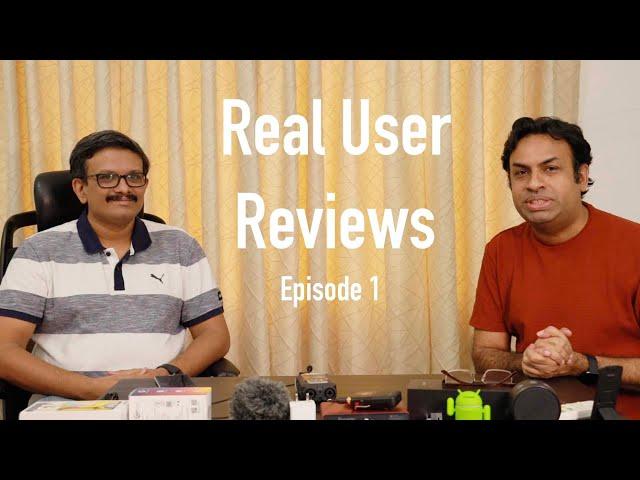
Real User Reviews: What Are Customers Saying About These Platforms?
As the digital landscape evolves, so do the preferences and experiences of those using email marketing platforms. Here’s what real users are saying about the top contenders in today’s market:
- Mailchimp: Users love its user-friendly interface and intuitive drag-and-drop editor. Many have praised its extensive integration options, making it easy to connect with e-commerce platforms and CRM systems. However, some have pointed out that pricing can escalate quickly as your subscriber list grows.
- Constant Contact: Customers often highlight the excellent customer service and support. The robust tools for event marketing and social media integration are frequently mentioned as standout features. On the downside, a few users feel that the reporting features could be more in-depth.
- Sendinblue: Users rave about the value for money, especially with its free plan offering SMS marketing alongside email. The automation features are also a big hit, though some reviewers have noted a steeper learning curve compared to other platforms.
- AWeber: The platform is commended for its ease of use and reliable deliverability rates. Users appreciate the comprehensive analytics and reporting tools, but some have expressed a desire for more modern templates to choose from.
- GetResponse: Many customers are fans of the webinar hosting feature that integrates seamlessly with email marketing campaigns. They also like the landing page creator. However, a few have pointed out that it can feel overwhelming for newcomers due to its wide array of features.
| Platform | User Sentiment | Common Pros | Common Cons |
|---|---|---|---|
| Mailchimp | Positive | User-friendly, Extensive integrations | Price hikes for large lists |
| Constant Contact | Positive | Great support, Event marketing tools | Limited reporting features |
| Sendinblue | Positive | Affordable pricing, SMS marketing | Steeper learning curve |
| AWeber | Positive | Reliable deliverability, Analytics | Outdated templates |
| GetResponse | Mostly Positive | Webinar feature, Landing pages | Overwhelming for newbies |
customers across these platforms express a strong appreciation for the functionalities that enhance their marketing efforts. Email automation, analytics, and customer support often emerge as critical factors influencing user satisfaction. However, it’s also clear that each platform has its unique strengths and weaknesses, which can significantly shape user experience. Thus, selecting the right tool ultimately boils down to the specific needs of your business and marketing objectives.
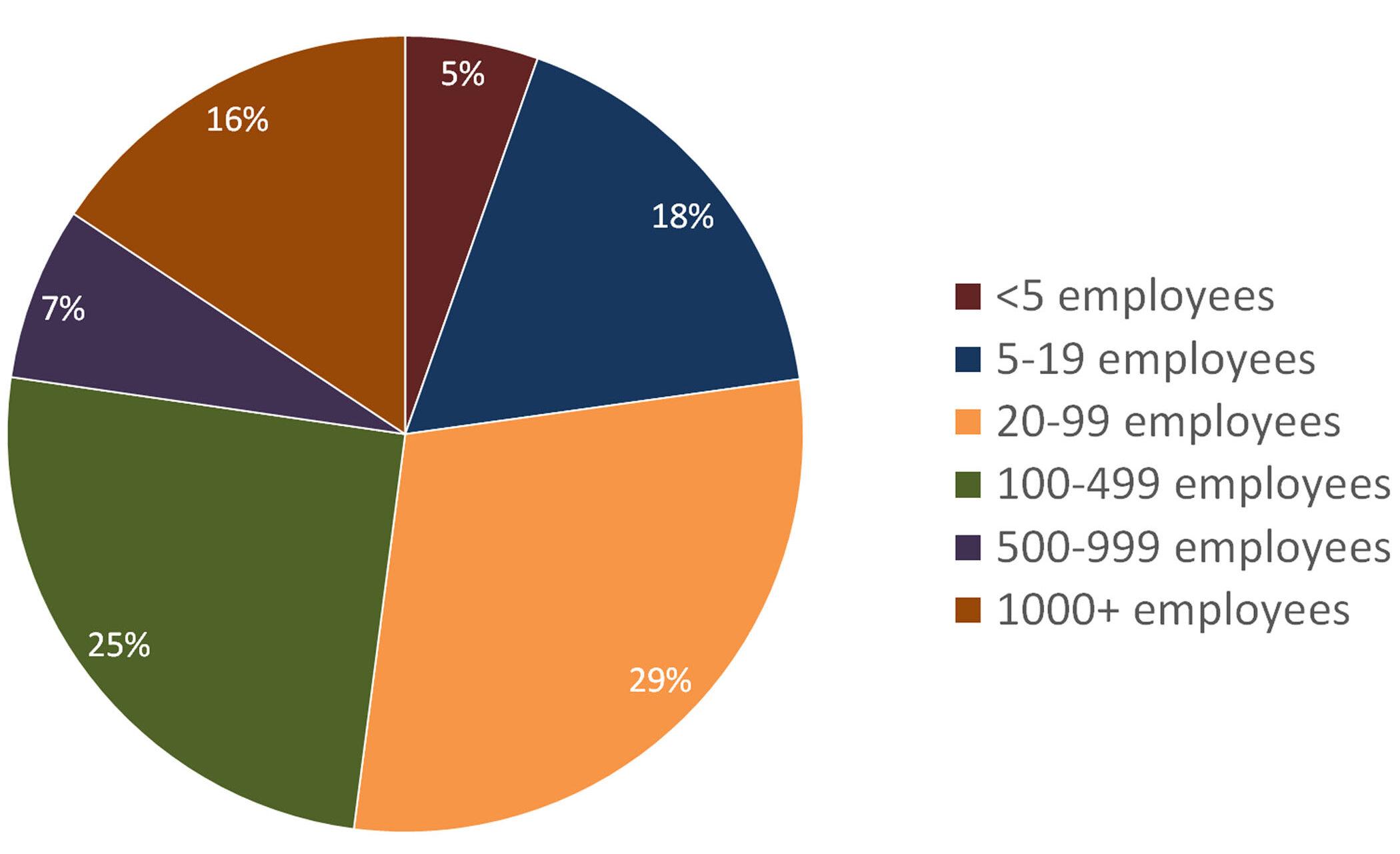
Making the Right Choice: Recommendations Based on Business Size
Choosing the right email marketing platform can significantly impact your business’s success, and the ideal option often depends on your company’s size and unique needs. Below are tailored recommendations for businesses of varying scales, ensuring you find the perfect fit.
For Small Businesses: Smaller enterprises often require cost-effective solutions with essential features. Look for platforms that offer:
- Affordability: Low monthly fees and pay-as-you-go options.
- User-Friendly Interfaces: Easy setup and intuitive design.
- Essential Features: Automation, list segmentation, and basic reporting.
Platforms like Mailchimp and MailerLite shine in this category, offering free tiers and straightforward tools to help you craft effective campaigns without breaking the bank.
For Medium-Sized Businesses: As your business grows, so do your needs. Look for features that enhance your marketing capabilities but don’t overwhelm your team. Consider platforms that provide:
- Advanced Automation: More sophisticated workflows and user behavior tracking.
- Integration Capabilities: Seamless connections with other tools like CRMs.
- Reporting and Analytics: Detailed insights to optimize your campaigns.
Providers like ActiveCampaign and Constant Contact are excellent choices, offering robust features that grow with your business while remaining accessible to your team.
For Large Enterprises: For businesses with extensive needs, the right platform should support complex email marketing strategies and high levels of customization. Look for:
- Scalability: Ability to handle large volumes of subscribers and emails.
- Comprehensive Analytics: In-depth data analysis and reporting tools.
- Custom Solutions: Tailored support and API integrations.
Platforms such as HubSpot and Salesforce Marketing Cloud provide the advanced functionality and support necessary for large organizations, ensuring your campaigns are not only impactful but also efficient.
When evaluating the right email marketing platform, it’s essential to consider not just your current needs but also your future goals. Each business size has unique challenges and opportunities, and selecting a platform that can evolve with you can make all the difference in your marketing success.
| Business Size | Recommended Platforms | Key Features |
|---|---|---|
| Small | Mailchimp, MailerLite | Affordability, User-Friendly, Essential Features |
| Medium | ActiveCampaign, Constant Contact | Advanced Automation, Integration Capabilities, Reporting |
| Large | HubSpot, Salesforce Marketing Cloud | Scalability, Comprehensive Analytics, Custom Solutions |

Exploring Niche Platforms for Unique Marketing Needs
When it comes to email marketing, not all platforms are created equal. For businesses with specific needs, niche email marketing platforms can offer tailored features that mainstream options might overlook. These specialized tools are designed to cater to unique audiences and marketing strategies, making them an attractive choice for businesses aiming to stand out.
Consider platforms that focus on particular industries or functionalities. For instance, if you’re in the e-commerce sector, look for an email marketing service that integrates seamlessly with your shopping cart, automating transactional emails and recovery campaigns. This can significantly enhance customer experience and boost sales.
Another aspect to explore is platforms specializing in behavioral email marketing. These services analyze user behavior on your website and send targeted emails based on actions taken (or not taken). This could mean sending a follow-up email to someone who abandoned their cart or a personalized recommendation based on past purchases. Such tactics can dramatically increase engagement rates.
For service-based businesses, consider platforms that facilitate personalized communication. Features like appointment reminders, customer feedback requests, and service updates can be invaluable. These tools help maintain a connection with your clients, ensuring they feel valued and informed.
Here are some examples of niche platforms worth exploring:
- Mailchimp: Offers a user-friendly interface with strong e-commerce integrations.
- ActiveCampaign: Great for businesses looking to enhance their marketing automation strategies.
- ConvertKit: Ideal for creators and bloggers, focusing on building subscriber relationships.
- Drip: A powerful choice for e-commerce marketing with robust automation features.
- Constant Contact: Perfect for small businesses needing straightforward yet effective tools.
Additionally, it’s crucial to gauge how well these platforms integrate with your existing tools. Compatibility with your CRM, social media platforms, and analytics tools can streamline your workflow and improve results. The last thing you want is to juggle multiple systems that don’t communicate with each other.
Don’t overlook pricing structures. Many niche platforms offer flexible plans that can accommodate startups and large enterprises alike. Always ensure you choose a solution that fits your budget without sacrificing essential features. Look for trial periods or freemium options to test the waters before committing.
| Platform | Key Feature | Best For |
|---|---|---|
| Mailchimp | Extensive integrations | E-commerce businesses |
| ActiveCampaign | Advanced automation | Growing businesses |
| ConvertKit | Subscriber-focused | Content creators |
| Drip | Intuitive workflows | Online retailers |
| Constant Contact | User-friendly tools | Small businesses |
Ultimately, finding the right email marketing platform tailored to your niche can be a game-changer. By leveraging specialized features, you not only enhance your email marketing strategy but also create a more personalized experience for your audience. Take the time to evaluate your options, and don’t hesitate to reach out to platform representatives for demos or additional information.
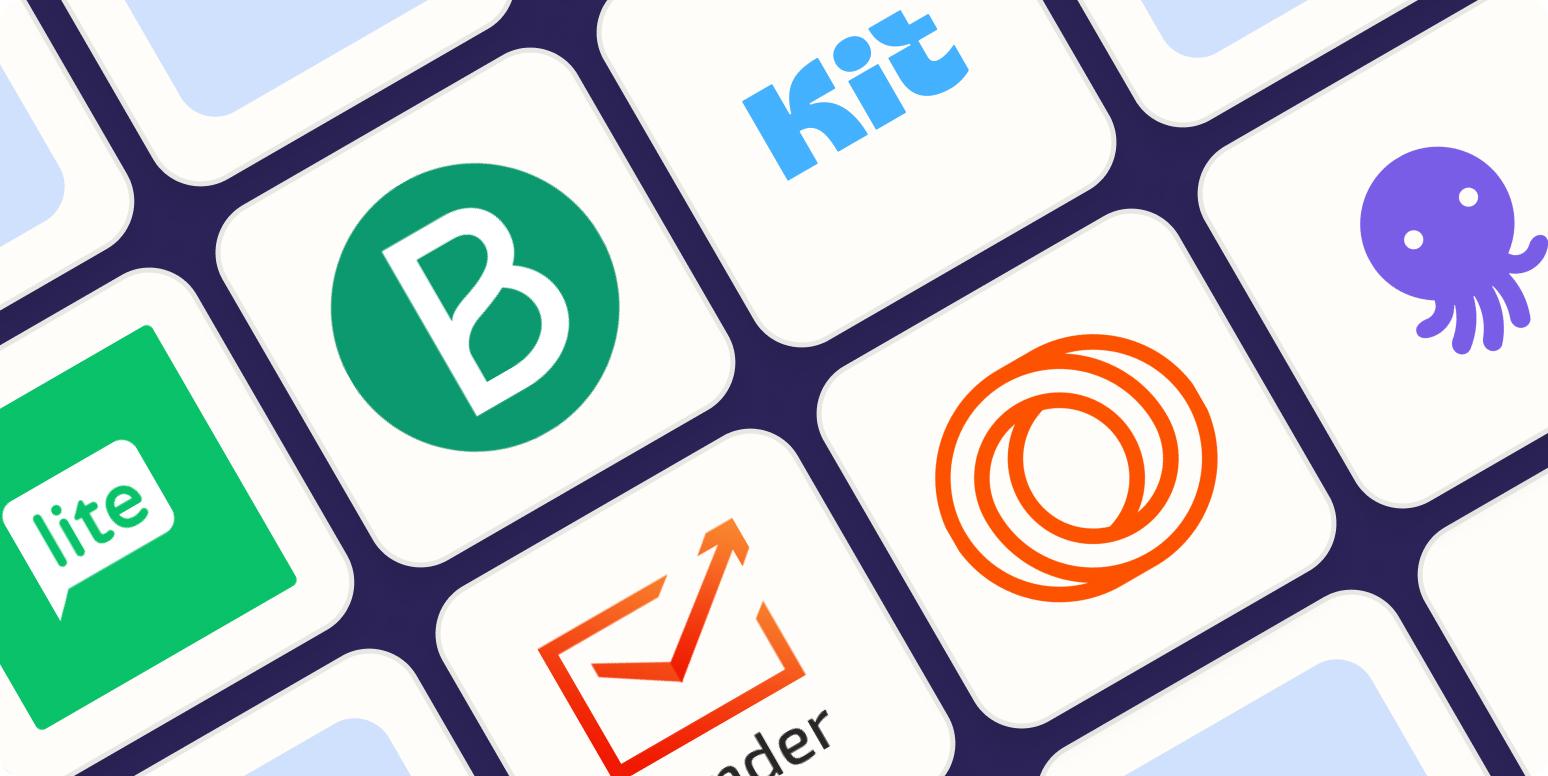
Final Thoughts: Choosing the Best Email Marketing Platform for Your Goals
When it comes to choosing the right email marketing platform, the decision can feel overwhelming, especially with the myriad of options available today. However, aligning your choice with your specific goals can simplify the process significantly. Consider what you want to achieve. Are you looking to boost sales, enhance customer engagement, or perhaps improve brand awareness? Understanding your primary objectives is the first step in selecting a platform that meets your needs.
Another critical factor to evaluate is ease of use. Some platforms offer a sleek, user-friendly interface that can save you time and frustration, while others may require a steeper learning curve. If you’re a beginner, look for features like drag-and-drop editors, pre-designed templates, and straightforward analytics dashboards. These tools can aid in launching your email campaigns much quicker.
Don’t forget to consider integration capabilities. Your email marketing platform should work seamlessly with your existing tools, whether it’s your CRM, e-commerce store, or social media platforms. This integration not only saves you time but also enhances your overall marketing strategy by allowing you to synchronize your efforts across different channels.
Pricing is another essential aspect to scrutinize. Many platforms offer tiered pricing plans based on the number of subscribers or features available. Before committing, assess your budget and explore whether the platform offers a free trial or a money-back guarantee. This way, you can test the service without a significant financial commitment.
Additionally, customer support is pivotal, especially if you encounter issues or have questions as you navigate the platform. Look for providers that offer multiple support channels, including live chat, email, and phone support. Access to comprehensive documentation and tutorials can also enhance your experience.
| Platform | Free Trial | Integrations | Support Options |
|---|---|---|---|
| Mailchimp | Yes | Extensive | Email, Chat |
| Constant Contact | Yes (60 Days) | Limited | Phone, Email |
| Sendinblue | Yes | Moderate | Email, Chat |
| AWeber | Yes (30 Days) | Moderate | Phone, Email |
Ultimately, the best email marketing platform is the one that aligns with your unique business needs and goals. Take your time to explore different platforms, read reviews, and even reach out for demos or consultations. Remember, the right choice not only enhances your marketing efforts but also grows your business effectively.
Lastly, don’t underestimate the power of testing and optimization. Whichever platform you choose, make sure to leverage its analytics tools to track your campaign performance. This way, you can continuously refine your strategies and improve your results over time, ensuring your email marketing efforts yield the highest return on investment.
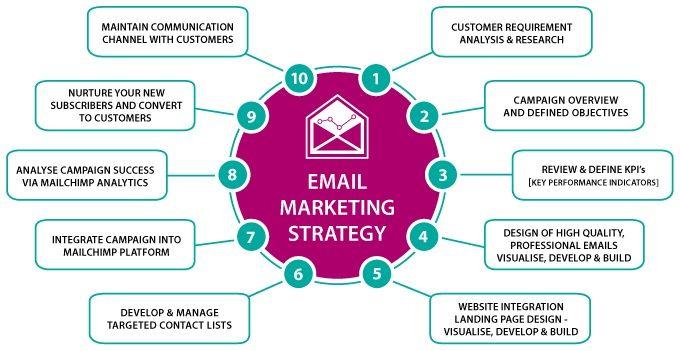
Next Steps: Setting Up Your Email Marketing Strategy Today
Now that you’ve explored the various email marketing platforms available, it’s time to take actionable steps toward establishing a successful email marketing strategy. The key to effective email marketing lies in understanding your audience and delivering value through your communications. Here’s how you can get started today:
Define Your Goals
Before diving into your email marketing setup, it’s critical to clarify what you want to achieve. Consider setting specific goals such as:
- Increasing Engagement: Aim for higher open and click-through rates.
- Boosting Sales: Drive conversions through targeted campaigns.
- Building Relationships: Foster trust and loyalty with your subscribers.
Choose Your Platform Wisely
With the insights from the comparison of the best email marketing platforms, select one that aligns with your goals, budget, and level of expertise. Look for features such as:
- Ease of Use: A user-friendly interface can save you time and frustration.
- Automation Capabilities: Automate repetitive tasks to streamline your campaigns.
- Analytics and Reporting: Gain insights into your campaign performance to refine your strategy.
Build Your Email List
Your email list is your most valuable asset. Start building it by:
- Creating Lead Magnets: Offer freebies like eBooks or discounts to entice sign-ups.
- Utilizing Social Media: Promote your email sign-up on your social channels.
- Implementing Signup Forms: Place forms strategically on your website or blog.
Craft Compelling Content
Content is king when it comes to email marketing. Focus on delivering value by:
- Personalizing Your Emails: Use subscriber names and tailor content to their preferences.
- Creating Engaging Subject Lines: An enticing subject line can significantly increase open rates.
- Segmenting Your Audience: Send targeted messages to different segments for better engagement.
Establish a Sending Schedule
Consistency is key in email marketing. Determine how often you will send out emails and stick to that schedule. Consider factors such as:
- Frequency: Daily, weekly, or monthly, depending on your audience’s preferences.
- Timing: Test different days and times to find what works best for your audience.
Measure and Optimize
Once your campaigns are live, don’t forget to measure their effectiveness. Utilize your platform’s analytics tools to track:
- Open Rates: Understand how many recipients are engaging with your emails.
- Click-Through Rates: Gauge interest in the content and offers you provide.
- Conversion Rates: Determine how well your emails drive desired actions.
By following these steps, you can lay a strong foundation for your email marketing strategy. Remember, the best email marketing campaigns are those that evolve over time, adapting to both technology and recipient feedback. Start today, and watch your engagement and results soar!
Frequently Asked Questions (FAQ)
Q: Why is email marketing still relevant in 2023?
A: Great question! Email marketing remains a powerhouse in digital marketing because it offers a direct line of communication with your audience. With a staggering ROI of 42:1, it’s one of the most cost-effective strategies. Plus, emails can be personalized to enhance engagement and conversion rates. In an age where social media algorithms can limit your reach, email ensures that your message gets delivered straight to the inbox of your subscribers.
Q: What should I look for in an email marketing platform?
A: When choosing an email marketing platform, consider features like ease of use, automation capabilities, segmentation options, and analytics. If you’re looking to create visually appealing emails, a good drag-and-drop editor is essential. Also, ensure that the platform integrates well with your existing tools—like your CRM or e-commerce platform. Lastly, don’t overlook customer support; having responsive assistance can make all the difference when you run into issues.
Q: Are free email marketing platforms worth it?
A: Free plans can be a great starting point, especially for small businesses or those just beginning their email marketing journey. However, they often come with limitations, such as a cap on the number of subscribers or features. As your business grows and your needs become more complex, investing in a paid plan can unlock powerful features that lead to better results.
Q: How can I improve my email open rates?
A: To boost your email open rates, focus on crafting compelling subject lines—they’re your first impression! Personalization also plays a huge role; using the recipient’s name can increase open rates. Additionally, segmenting your audience and sending targeted content can make your emails more relevant and engaging. Making sure that your emails are mobile-friendly is equally important, as a significant portion of users check their emails on mobile devices.
Q: What are some common mistakes to avoid in email marketing?
A: One common mistake is neglecting to clean your email list regularly. Keeping inactive subscribers can hurt your open rates and overall engagement. Another pitfall is not having clear calls-to-action (CTAs). Every email should guide your reader on what to do next, whether it’s to shop now, read a blog post, or download a free resource. don’t forget to test! A/B testing different elements of your emails can provide valuable insights into what resonates with your audience.
Q: How often should I send emails to my subscribers?
A: The frequency of your emails depends on your audience and the type of content you’re providing. A good rule of thumb is to aim for consistency rather than a specific number. Whether it’s weekly, bi-weekly, or monthly, stick to a schedule that your audience can expect. Just ensure your emails provide value every time; quality over quantity is key!
Q: Can I integrate my email marketing platform with other tools?
A: Absolutely! Most modern email marketing platforms offer integrations with various tools like CRMs, e-commerce platforms, and social media accounts. This connectivity allows for seamless data flow and helps you create more targeted campaigns. Be sure to check the integrations available to maximize your marketing efforts and streamline your processes.
Q: What’s the best email marketing platform for beginners?
A: For beginners, platforms like Mailchimp and Constant Contact are highly recommended due to their user-friendly interfaces and robust support resources. They offer a solid mix of features that cater to newcomers while still providing room to grow as your skills and needs evolve. Plus, they often have extensive tutorials to help you get started!
Q: Is email segmentation really that important?
A: Yes, absolutely! Segmentation allows you to divide your email list into smaller groups based on specific criteria, such as demographics, past purchases, or engagement levels. This tailored approach means your messages are more relevant to each recipient, leading to higher engagement and conversion rates. It’s a game-changer for maximizing the effectiveness of your campaigns!
Q: What are some advanced features I should consider as my email marketing skills grow?
A: As you become more experienced, look for features like advanced automation workflows, in-depth analytics, and dynamic content capabilities. These allow you to set up complex campaigns that respond to user behavior and preferences. A/B testing tools and social media integration are also invaluable as you refine your strategies and expand your reach.
Q: How can I stay compliant with email marketing regulations?
A: Staying compliant is crucial, and it’s relatively straightforward if you follow a few guidelines. Always get explicit permission before sending emails, provide a clear unsubscribe option in every email, and respect privacy regulations like GDPR or CAN-SPAM. Most reputable email marketing platforms have built-in compliance tools to help you stay on track, but it’s still worth educating yourself about the regulations that apply to your audience.
These questions and answers should give a solid starting point for your article on the best email marketing platforms this year. Let me know if you need more information!
In Summary
As we wrap up our deep dive into the 13 best email marketing platforms for [current_year], we hope you feel equipped to make a confident choice for your business. Whether you’re a small business owner, a marketing professional, or just starting your journey into the world of email marketing, finding the right platform can make all the difference in your campaigns’ success.
Remember, the best tool is the one that fits your specific needs. Take the time to explore the features, pricing, and support each option offers. Don’t hesitate to take advantage of free trials—after all, experiencing the interface firsthand can help you make a more informed decision.
So, what’s next? Dive in, experiment, and watch your email marketing efforts flourish. With the right platform by your side, you’ll not only engage your audience but also nurture relationships that lead to conversions and loyalty. Happy emailing, and here’s to your success in [current_year] and beyond!





